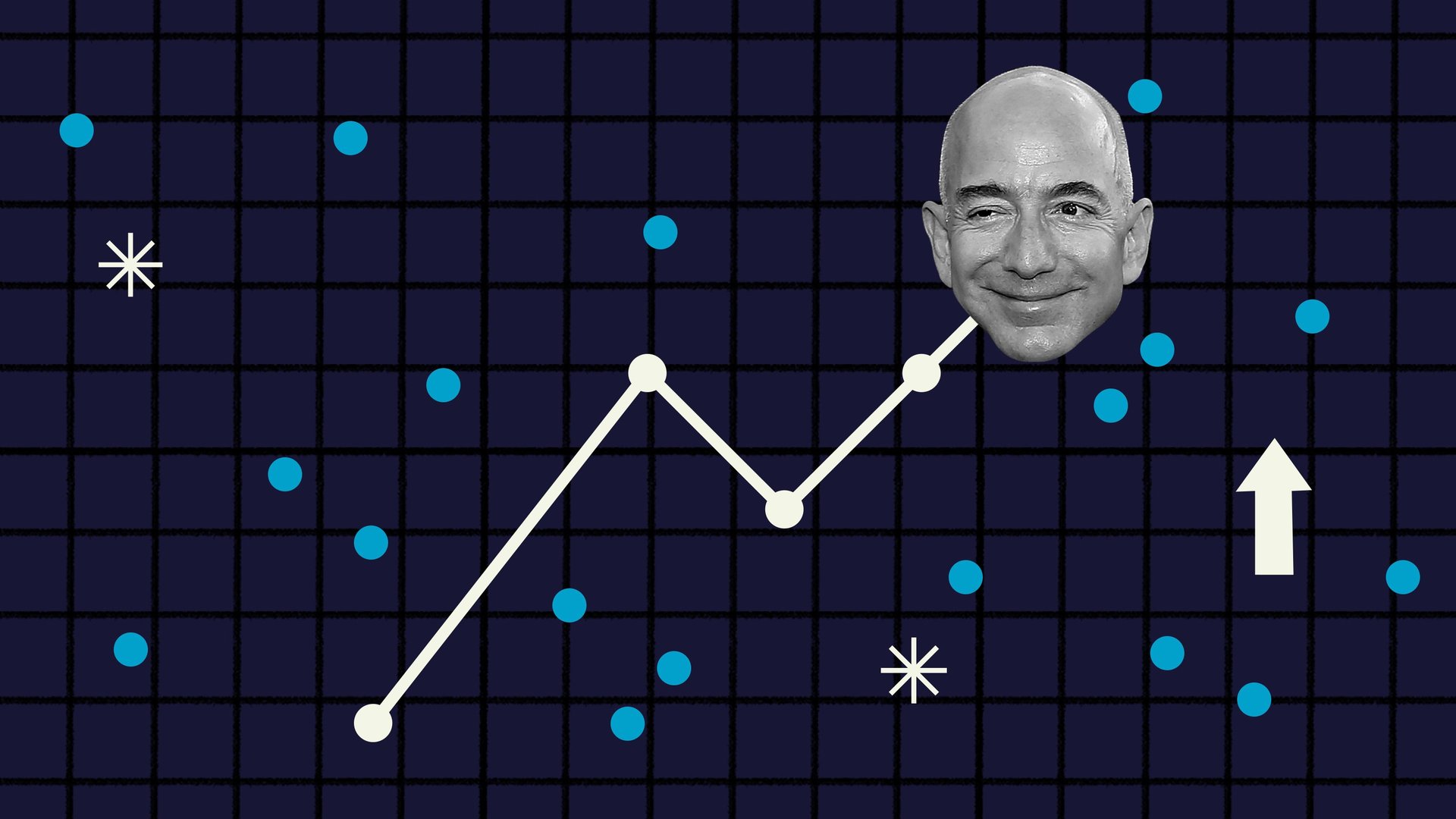How Jeff Bezos changed the economy, in charts
Free, next-day delivery of packages is normal. The brick-and-mortar bookstore industry has been decimated. Buying something takes one click. So far, this is the legacy that Jeff Bezos has left after running Amazon.com for almost three decades.


Free, next-day delivery of packages is normal. The brick-and-mortar bookstore industry has been decimated. Buying something takes one click. So far, this is the legacy that Jeff Bezos has left after running Amazon.com for almost three decades.
Of course, these things cannot be entirely attributed to one man—even the now-expired patent for one-click shopping notes three other co-inventors. But as CEO, every product Amazon made, every market it entered, and every decision it made can ultimately be traced back to him, directly or indirectly. So as he prepares to step down in the third quarter of 2021, here’s a look at some of the ways Amazon and Bezos’s decisions have changed the economy.
Bezos’s effect on online shopping
In 1994, when Amazon was founded, 2.2% of US retail spending was done through sellers without a physical sales location. In 2020, that rose to 15.6% driven by online buying during the Covid-19 pandemic. Amazon is consistently responsible for more than a fifth of all US online shopping.
In Europe, e-commerce sales continue to rise as well.
Bezos’s effect on UPS, Fedex, and US Postal Service
More people buying online means more packages to ship to more places. In 1994, the US postal service (USPS) delivered 871 million pieces (pdf, p. 30) of fourth-class mail, a now-defunct category that included parcels as well as some other types of mail. In 2020, it handled 7.3 billion parcels alone across its entire network.
Amazon has of course launched its own delivery fleet and freight network, reducing its reliance on long-term partners for both local and long-distance shipping. In 2020, Amazon delivered 66% of all of the packages it shipped in the US according to Shipmatrix. But the ability to basically buy anything online has spillover effects. The package delivery networks are seeing increased volume.
Bezos’s effect on warehouse employment
The closer the product is to the buyer when they buy it, the less time it takes to ship that product. That’s why the company has put warehouses—or, in Amazon’s lingo, “fulfillment centers”—everywhere it has customers. Its distribution network includes 1,600 facilities globally, with about half in the US.
Amazon now employs 1.3 million people globally after hiring 350,000 workers—primarily in delivery and warehouses—in a four-month period last year.
In the span of Amazon’s existence, US warehouse employment has more than tripled to over 1.4 million workers. Today, 10 out of every 1,000 US workers is in a warehouse, up from 3.7 in 1994.
Amazon Prime and subscriptions bring in more money than McDonald’s
Amazon’s subscription revenue, which includes Prime memberships and other content subscriptions, brought in more than $25 billion in 2020. That makes this part of its business bigger than McDonald’s and Starbucks, which had company-wide sales of $19.2 billion and $23.5 billion respectively that same year.
Bezos’s effect on Hollywood
Amazon Studios has spent billions of dollars to produce new TV series and movies. Many have found critical success, but award season has yet to shower Jeff Bezos with adoration. So far he has only been personally thanked in one Emmy award acceptance speech and has yet to be mentioned by anyone accepting an Academy Award. This puts him behind Steve Jobs (who founded Pixar) and Netflix co-CEO Ted Sarandos, according to the Academy Awards Acceptance Speech Database, which covers all speeches since 1966.
Two films from Amazon have won Oscars, and more of its television shows, including Fleabag and The Marvelous Mrs. Maisel, have won Emmys. Only Jill Soloway has thanked Bezos on stage after winning an Emmy for directing an episode of her series Transparent.
Bezos’s biggest influence on entertainment, and people’s understanding of it, often goes unnoticed. Amazon has owned IMBD since 1998.
Bezos’s effect on Bookstores
In the beginning, Amazon was a bookseller. Since its founding, the number of US book store locations has been cut in half. The number of bookstores first rose from 12,607 in 1994 to 13,254 in 1998 before beginning 22 straight years of net closures. In the second quarter of 2020, there were 6,327 US bookstores, according to the US Bureau of Labor Statistics Quarterly Census of Employment and Wages.